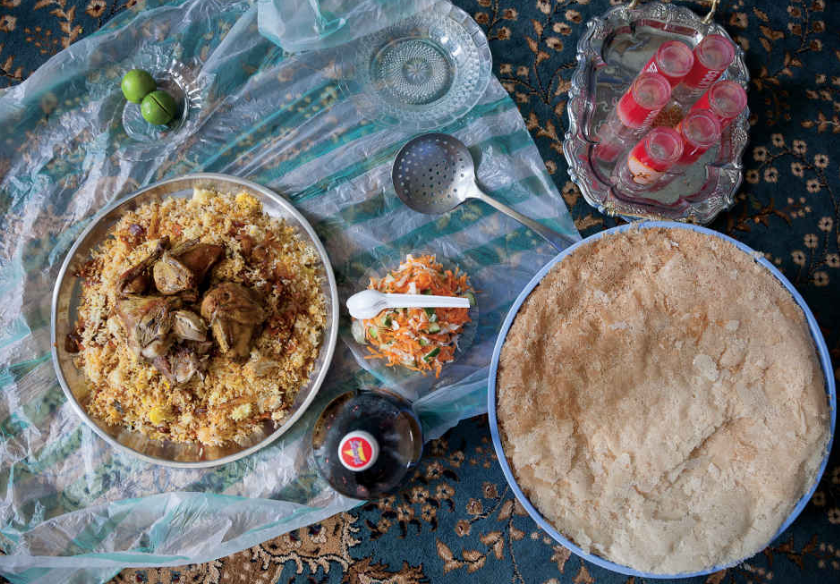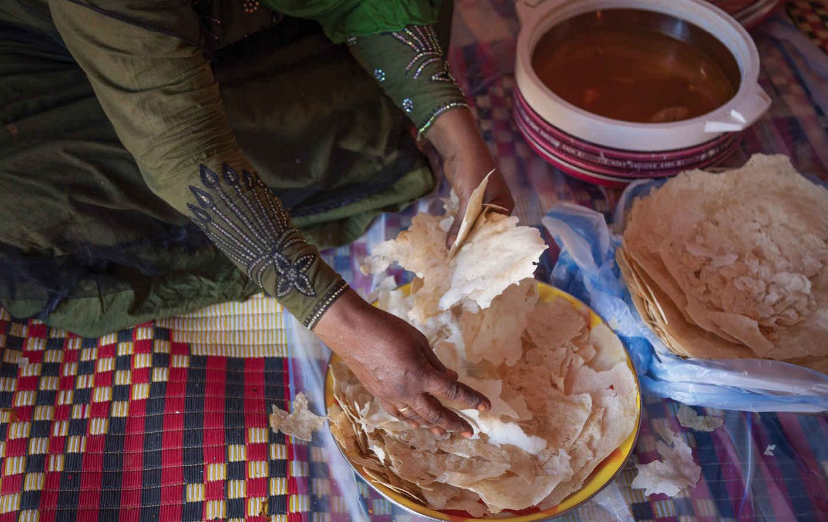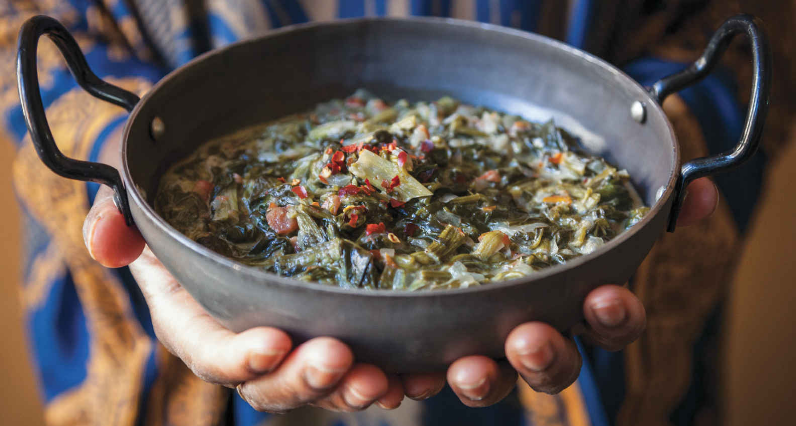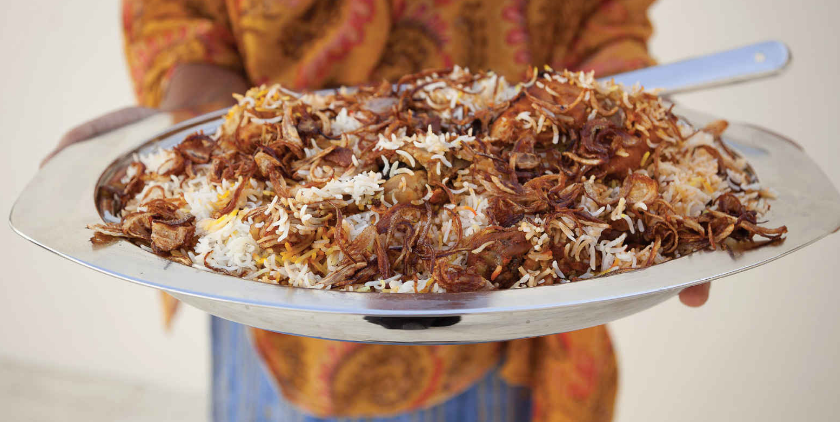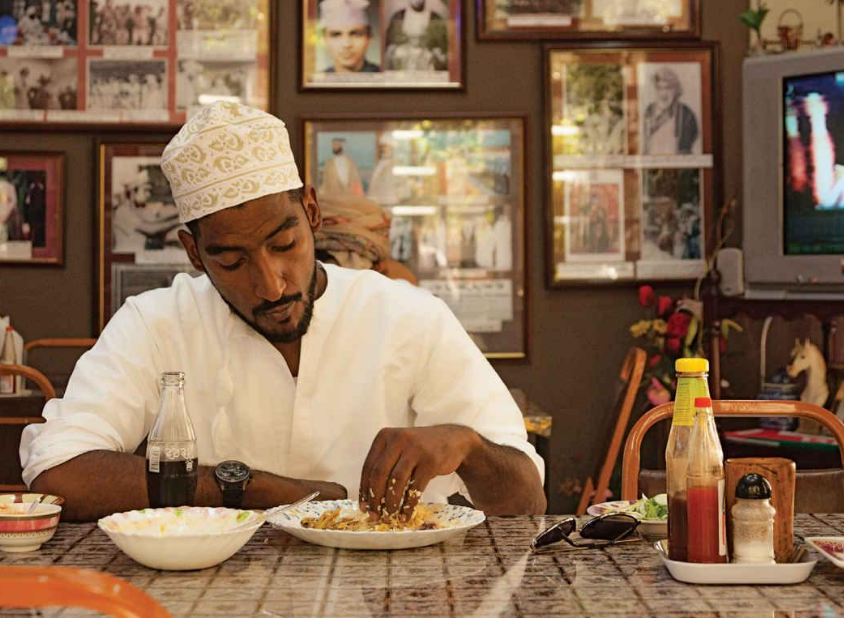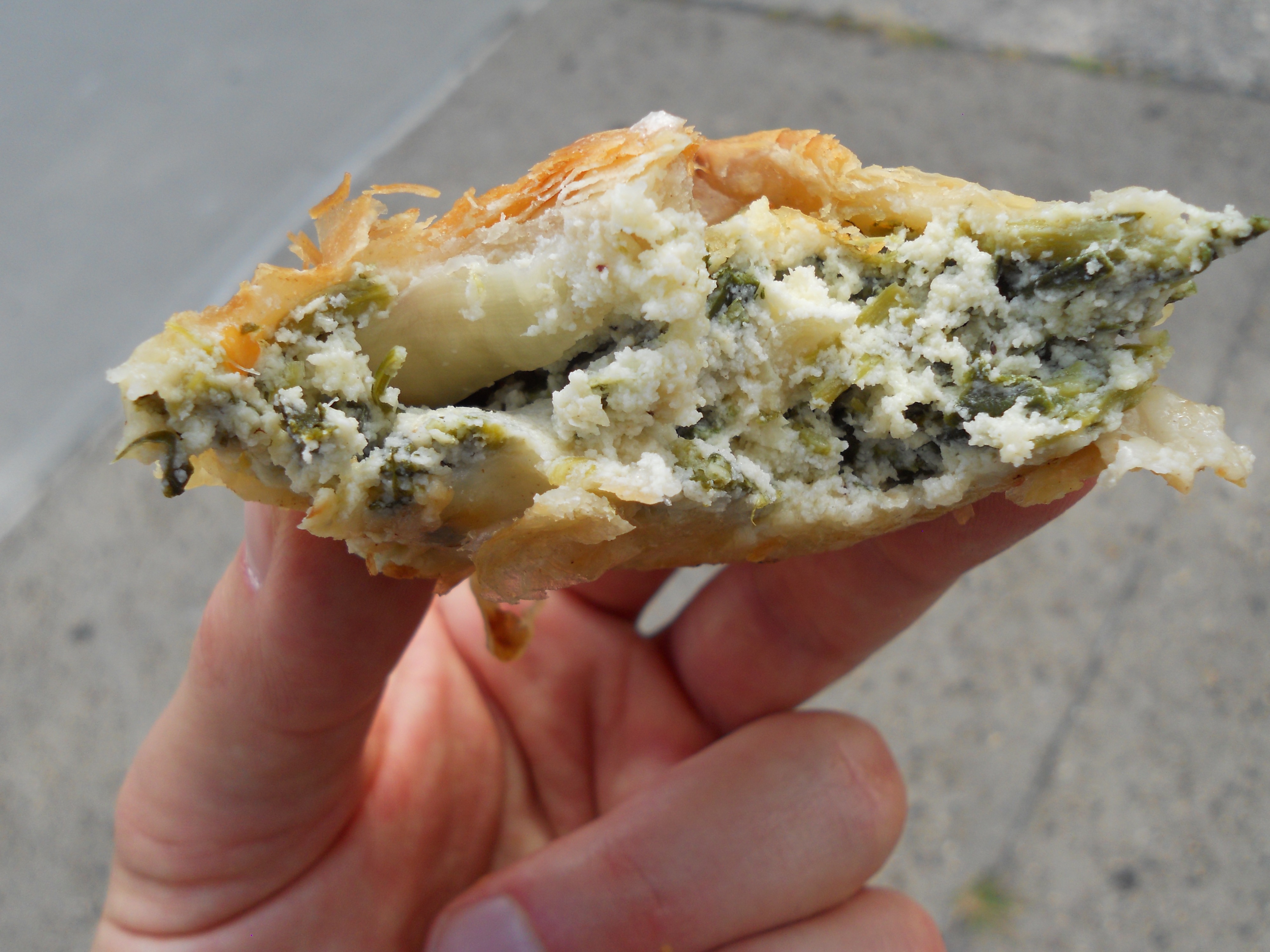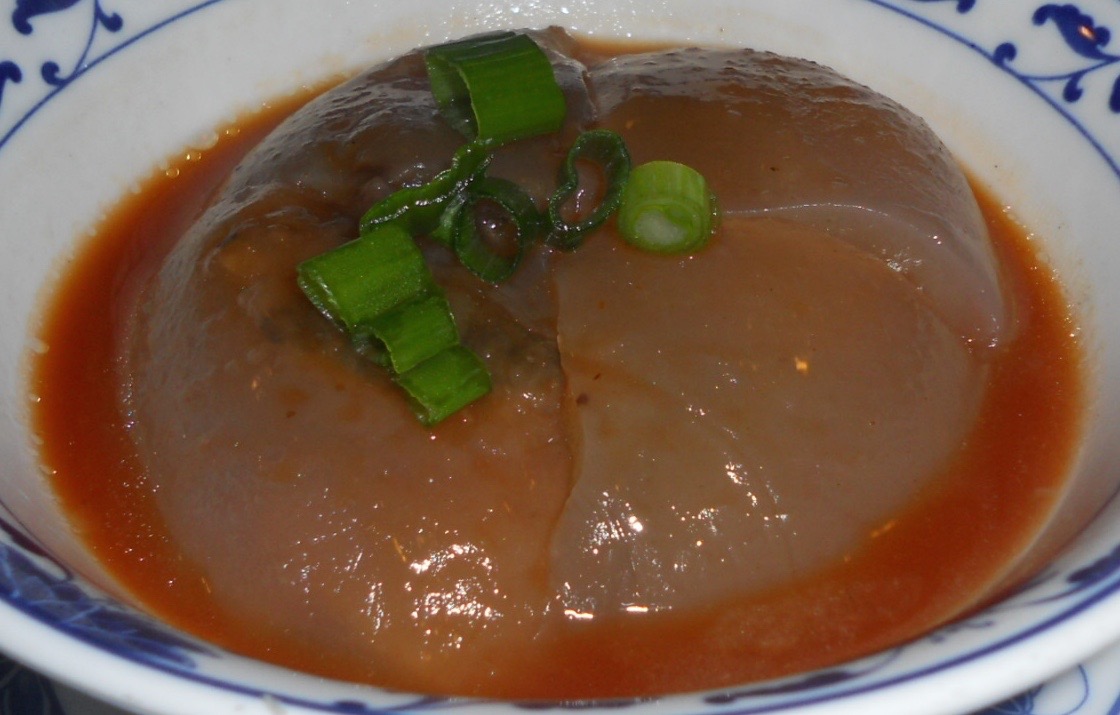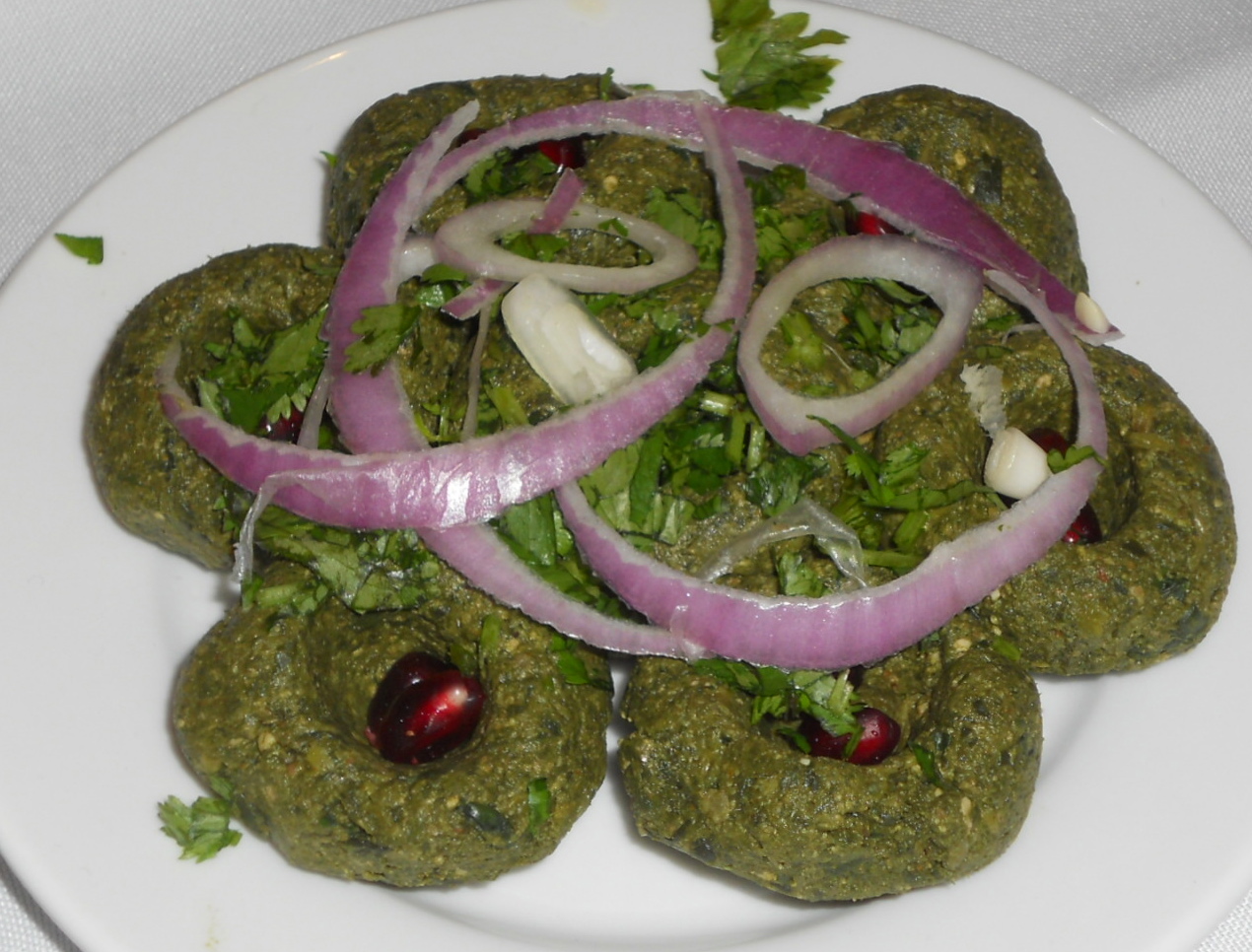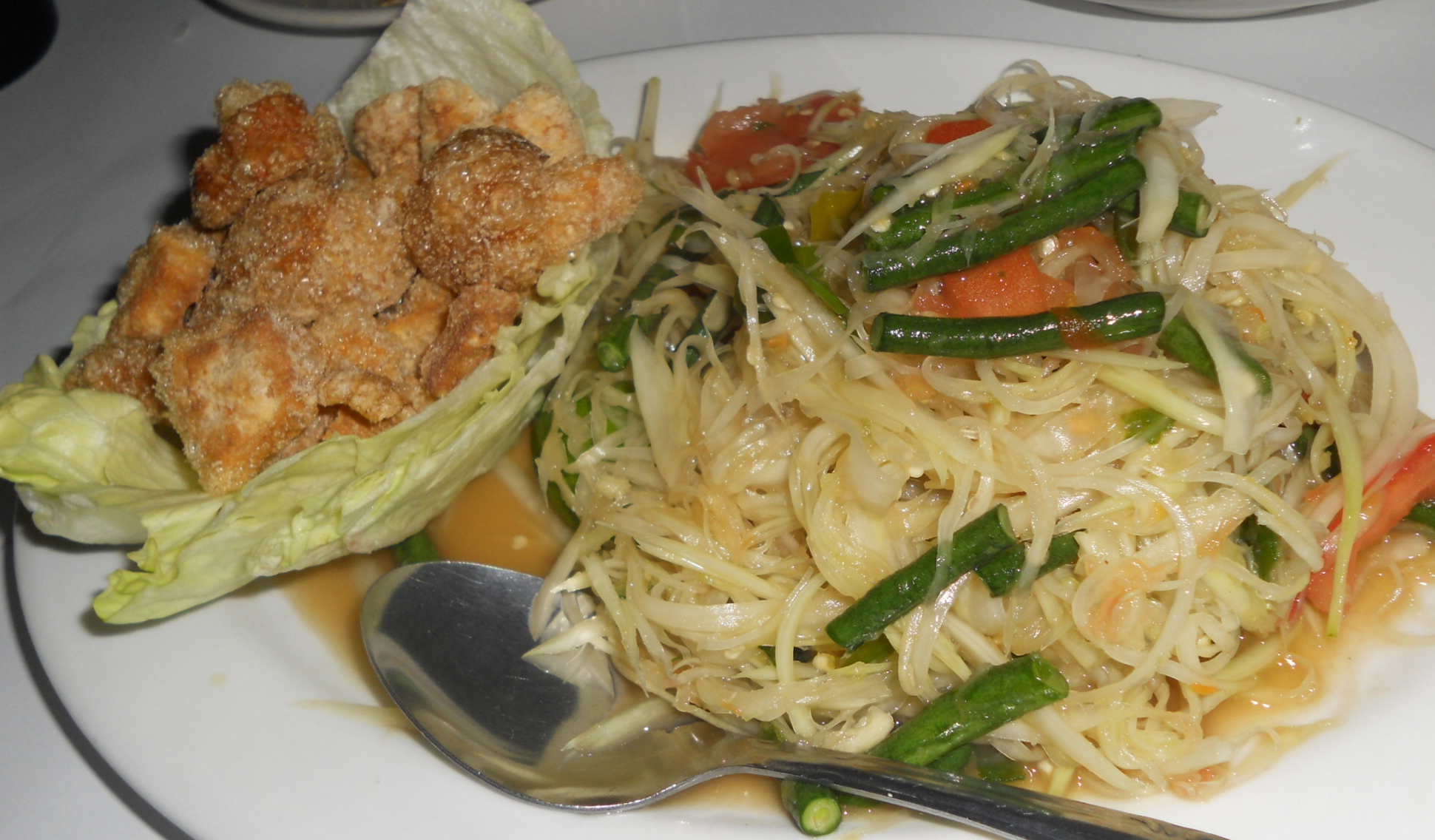Because my life is chewy awesome, I spend countless hours googling certain hard-to-find cuisines. I know: hour after hour with Google probably doesn’t sound like fun. But sometimes I accidentally run into some pretty incredible stuff, like an entire English-language cookbook devoted solely to the food of Oman.
Felicia Campbell, the author of The Food of Oman: Recipes and Stories from the Gateway to Asia, has had one hell of a fascinating journey to becoming an expert on Omani cuisine. Campbell was raised by a pair of university professors, and she had just started college when 9/11 happened. Her reaction was exactly what you’d expect from a family of academics – or, um, not. She enlisted in the Army, and did a tour of duty as a combat soldier in Iraq.
Like most military personnel, Campbell fell in love with Middle Eastern food, culture, and hospitality, and realized that there was much more to Iraq than she’d been told. “All I knew was the American rhetoric about these people being our enemies,” she told me via phone from Oman. “And then I had the opportunity to go into villages and interact with people, and I was struck by their sense of hospitality. Even though we were uninvited guests in their country, they would invite us in for tea, and we would just start talking.”
More than a decade later, Campbell now lives in Muscat, Oman, and she recently released The Food of Oman, which is the only English-language Omani cookbook currently in print. I literally read the book from cover to cover, as if it were a really tasty novel: Campbell’s book doubles as a cultural memoir, with plenty of insight into Omani culinary life. So even if you’re not much of a recipe-hound, there’s plenty of reason to give it a read.
Here are a few of my favorite highlights from the book and my conversation with Campbell:
When Omani Food Almost Disappeared
When Campbell first proposed writing an article about Omani food for Saveur magazine in 2012, there was a huge problem: at the time, there weren’t actually any restaurants that served traditional Omani food. You could find legions of Levantine, Turkish, Indian, European, and East Asian restaurants in Oman, but Omani cuisine appeared to be dead – at least according to TripAdvisor.
Of course, plenty of Omanis still enjoyed traditional dishes at home, but with some curious twists. Beginning in the 1970s, as oil wealth began to slosh through the economy and women increasingly pursued their own careers, domestic tasks were handled by staff from Indonesia, South Asia, and the Philippines. But as Campbell puts it, this led to an interesting phenomenon of “cook-trading”: the household cooks were taught a few recipes, and whenever a family enjoyed a dish in another family’s home, they would send their cook to learn the recipe from the other household’s cook.
So Omani food hadn’t vanished – it was just hiding beyond the prying eyes of the internet, and had been kept alive primarily by non-Omanis.
Campbell’s Favorite Omani Recipes
Pretty much every recipe in The Food of Oman sounds amazing. Oman was a major crossroads in spice trading routes, and the cuisine is infused with ingredients from South Asia and East Africa, as well as flavors of the Middle East. Spicy calamari curry, chili-lime chickpeas, and frankincense ice cream? Sign me up.
When I spoke with her, I cruelly asked Campbell to pick a couple of favorites. She said that a Zanzibari version of creamed spinach – simmered in onions, chilies, cumin, and coconut milk powder – was the first Omani dish that she fell in love with.
Her other favorite sounds even more decadent: musanif djaj, or double-fried chicken dumplings. Basically, you fry something that resembles an Omani version of pancake batter, and then top it with spicy minced chicken, seasoned with ginger, lime juice, garlic, cilantro, and chilies. Then you drizzle it with more batter – and then fry it again. Sounds epic.
And in case you don’t have access to ethnic grocery stores, Campbell’s recipes can be prepared with ingredients from a nice, normal, American grocery store. As she wrote the book, Campbell said that she pictured “a passionate home cook in Middle America.” So even if you’re a long way from the wonders of, say, Kalustyan’s, you’ll be fine.
The Omani Food Renaissance
Interestingly, Omani food is making a resurgence in restaurants now. There are now at least 10 restaurants in Oman that serve the national cuisine, and there are rumors that Oman’s first celebrity chef, Issa Al-Lamki, might open an Omani restaurant overseas. (Please come to New York, Chef!)
Of course, dishes from Europe, the Levant, and Asia remain popular in Omani restaurants, especially in the cities. But international cuisine is primarily a dinnertime phenomenon in Oman. Lunch in Oman has always been centered around Omani rice dishes, which resemble Indian biryanis. “Omanis can eat 20 sandwiches for lunch, but if they haven’t had rice, they swear that they haven’t eaten,” Campbell explained.
So TripAdvisor wasn’t completely bonkers when it claimed that Omani food had been replaced by international cuisine. It’s just that TripAdvisor didn’t know much about lunch.
“Everyone loves to eat in Oman, even the glamour girls.”
Perhaps the most interesting bits of the book were Campbell’s insights about Oman’s culture, its extraordinary culinary history, and its enthusiastic embrace of the joy of eating.
Here in America, we tend to have a guilty streak when we eat: it seems like whenever we finish a huge meal, somebody sheepishly mumbles something about needing to go to the gym tomorrow. Maybe that’s not a surprise: after all, we’re the cultural descendants of Puritan colonists, and we’re just a wee bit body-image obsessed.
But Omanis aren’t shy about eating at all, and they enthusiastically embrace food as “a gift from Allah,” as Campbell puts it. In my favorite scene of the book, Campbell dined with a group of fashionable Omani women, and she was worried about the meal: “I was starving, but I wondered if these perfectly coiffed ladies would just nibble daintily.”
Spoiler alert: the meal sounded amazing – and it wasn’t dainty at all.
I don’t know about you, but I think there’s something refreshing and beautiful about a culture that gets so deeply excited about food, without even a hint of shame or sheepishness. Pass the double-fried chicken dumplings, please.
Do you know anybody who might be willing to prepare Omani cuisine in New York City – or who might just enjoy having a good conversation about Omani food? Email me at unitednationsoffood@gmail.com, or connect with me on Twitter, Facebook, or Instagram. And check out Campbell’s book – it’s a fascinating read, even if you’re not much of a chef.


